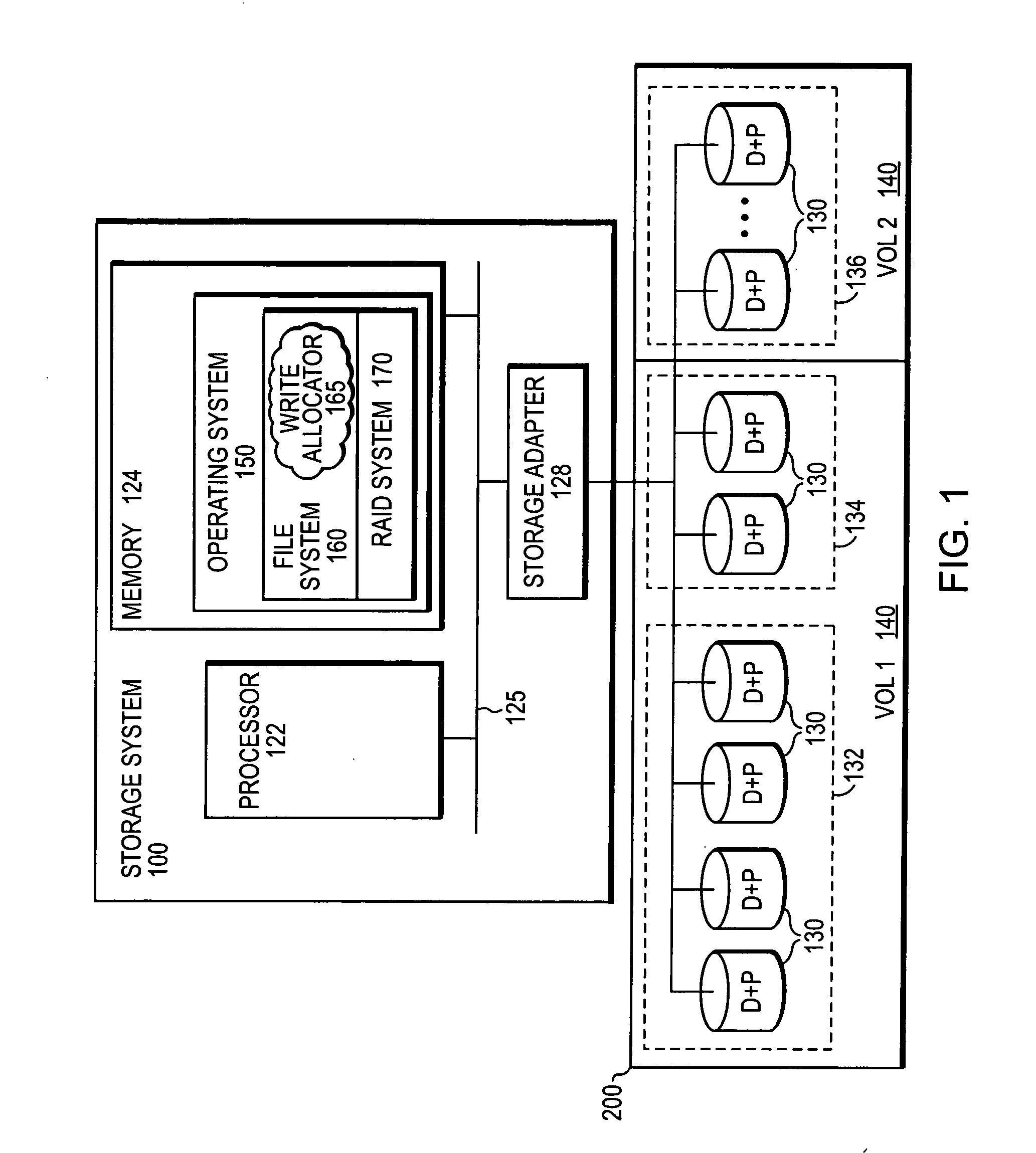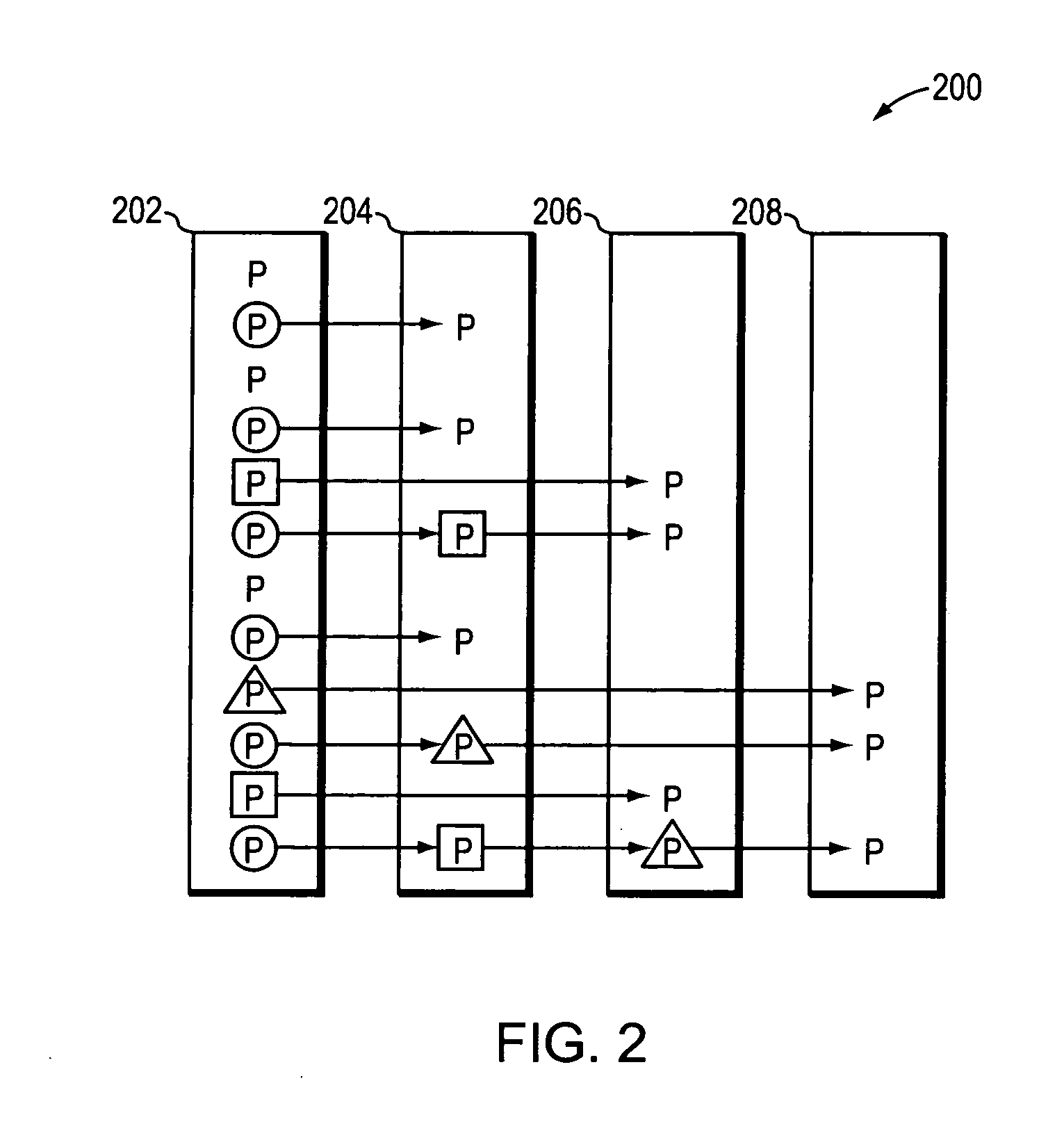Semi-static distribution technique
a distribution technique and semi-static technology, applied in memory systems, redundant data error correction, instruments, etc., can solve the problems of increasing the fraction of disks that cannot be used for read operations, reducing the number of group sizes, and parity disks to seek, so as to improve the performance of disk-bound configuration
- Summary
- Abstract
- Description
- Claims
- Application Information
AI Technical Summary
Benefits of technology
Problems solved by technology
Method used
Image
Examples
Embodiment Construction
[0022]FIG. 1 is a schematic block diagram of a storage system 100 that may be advantageously used with the present invention. In the illustrative embodiment, the storage system 100 comprises a processor 122, a memory 124 and a storage adapter 128 interconnected by a system bus 125. The memory 124 comprises storage locations that are addressable by the processor and adapter for storing software program code and data structures associated with the present invention. The processor and adapter may, in turn, comprise processing elements and / or logic circuitry configured to execute the software code and manipulate the data structures. It will be apparent to those skilled in the art that other processing and memory means, including various computer readable media, may be used for storing and executing program instructions pertaining to the inventive technique described herein.
[0023] A storage operating system 150, portions of which are typically resident in memory and executed by the proc...
PUM
 Login to View More
Login to View More Abstract
Description
Claims
Application Information
 Login to View More
Login to View More - R&D
- Intellectual Property
- Life Sciences
- Materials
- Tech Scout
- Unparalleled Data Quality
- Higher Quality Content
- 60% Fewer Hallucinations
Browse by: Latest US Patents, China's latest patents, Technical Efficacy Thesaurus, Application Domain, Technology Topic, Popular Technical Reports.
© 2025 PatSnap. All rights reserved.Legal|Privacy policy|Modern Slavery Act Transparency Statement|Sitemap|About US| Contact US: help@patsnap.com



